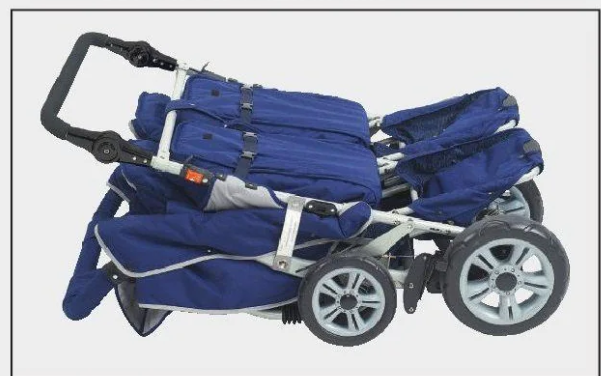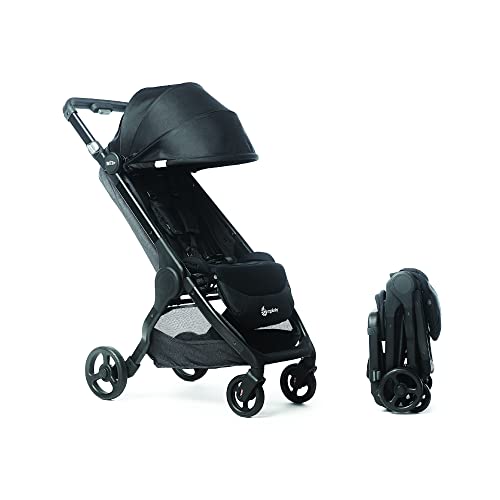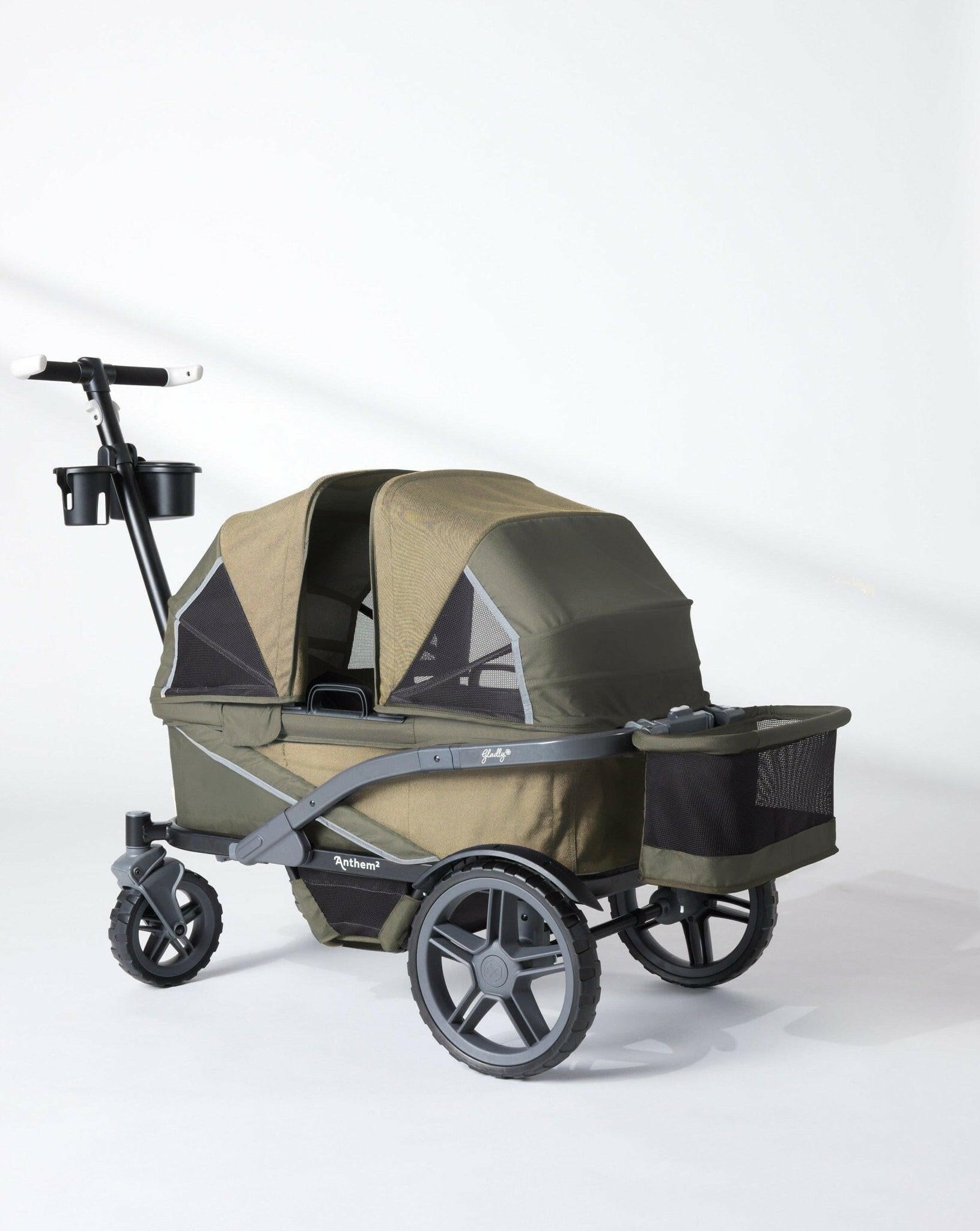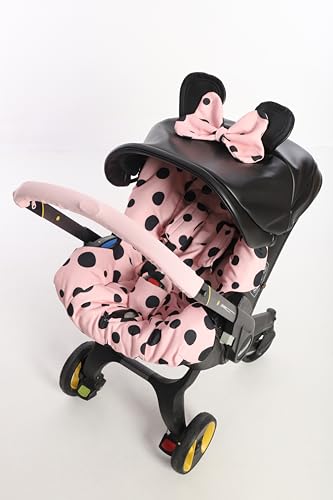Most of us don’t know that removing a Nuna car seat from its base is easy if you know the simple steps. But as parents, we have to make sure our child is safe and doesn’t get hurt. Interestingly, Nuna’s infant car seats (like the PIPA series) click into a base that stays installed in your vehicle, so the carrier can quickly snap in and out. According to experts, infant seats are designed as “rear-facing only” carriers with detachable bases.
This setup really simplifies daily life. For example, you can carry your baby in the seat or switch it to a stroller without having to reinstall anything.
In this guide, you’ll learn how to remove the Nuna car seat from its base for popular models like the PIPA, PIPA Lite, and PIPA RX with the RELX base. We’ll also cover safety tips, troubleshooting, and practical situations where you might need to detach the seat.
What Happens when you Remove Nuna Car Seat from it Base?
There are plenty of everyday moments when you’ll need to remove Nuna car seat from its base. Mostly, they are confused about which one is better, like infant car seat or convertible car seat. For instance, you might want to bring your baby inside without disturbing their nap, especially helpful if you’re heading to a doctor’s appointment or just carrying them upstairs. One of the best things about Nuna seats is their compatibility with strollers for those who love traveling. So you can easily pop the seat out of the car and click it right onto the stroller frame without any fuss.
If you’re switching between vehicles, like using a second family car or hopping into a rental, removing the carrier (and even the base) allows for a quick transition. Cleaning is another common reason; lifting the seat off makes it much easier to vacuum under the base or remove the fabric for washing. And when you’re traveling, especially by taxi or airplane, being able to detach the seat and carry it on board can make your trip a whole lot smoother.
In all of these cases, the process is the same: press the release button, lift the carrier, and you’re good to go. Just make sure your baby is securely buckled in during removal — unless you’re planning to take them out first — and always check that the seat is properly clicked into the base before driving or practicing removal.
Step-by-Step: Removing a Nuna PIPA (or PIPA RX/RELX) Infant Seat
For Nuna PIPA RX with the RELX base, the release mechanism is integrated into the base itself. Just follow the instructions, and you will know how to use it perfectly. Check the steps:
Secure the vehicle and handle:
First things first, make sure your car is parked on level ground and set to “Park.” Position the infant carrier’s handle in the upright carry position and ensure it’s locked in place. An unlocked handle can swing around unexpectedly, so it’s crucial to lock it before lifting the seat.
Verify the seat is latched:
Press down on the car seat in its base until you hear or feel a satisfying click. This sound confirms that the seat is fully engaged in the base.
Press the release button:
After that, you need to search for the release lever or button on the back of the base—it’s usually a red or gray tab. Give this release button a firm squeeze.
Lift the carrier off:
Now, push the button. After that, drag the infant carrier out of the base. It should detach smoothly. If it feels stuck, double-check that you’re pressing the release fully.
Carry your baby out:
Keep holding the handle in the locked position and lift the seat—making sure your little one is safely buckled inside—out of the car. If needed, adjust the handle to a comfortable carrying angle after you’ve detached it.
All these steps are backed by Nuna’s official instructions. The manual clearly states, “To release the child restraint, squeeze the car seat release button … and then pull the child restraint up.” And that’s all there is to it!
Step-by-Step: Removing a Nuna PIPA Lite Infant Seat
The Nuna PIPA Lite (and PIPA lite RX) works almost the same way. And here the instructions specify how to remove Nuna Pipa Lite infant car seat:
- Check handle position: Lock your handle in the carry position (upright).
- Verify latch: Press down on the carrier to listen for a click, confirming it’s latched to the base.
- Squeeze the base button: Check carrier release button on the PIPA Lite base. Squeeze it firmly (you may see two buttons for the rigid LATCH connectors on either side).
- Pull up the seat: While squeezing, lift the carrier straight up from the base. The seat will pop off.
The PIPA Lite manual even suggests pushing the base toward the vehicle as you press the latch release levers for easier removal, but the core action is the same. Drag your child restraint up when you press the carrier release button.
In both models (PIPA and PIPA Lite), the infant can safely remain buckled in the seat during removal. You do not need to loosen the harness unless you plan to remove the child first. Always lift by the handle or sides of the carrier—never by the canopy or straps.
Tips and Safety Advice
Now you all know how to remove Nuna seat from its base should be straightforward and safe. Keep these tips in mind:
Follow Nuna’s instructions:
Remember, reading the user manual is always necessary. They include crucial safety steps and weight/height limits. Never skip the release step, and do not modify any part of the seat.
Keep child rear-facing:
Nuna PIPA seats are for rear-facing use. According to CDC and AAP, it is suggested to keep babies rear-facing as long as possible. Even when removing the seat, always ensure the child remains rear-facing with the harness snug.
Stationary vehicle:
Park the car on a level surface. And then apply the parking brake first. It is forbidden to remove the seat on an incline or with the engine running.
Lock the handle:
As noted, lock the carrying handle in the carry (upright) position before lifting. An unlocked handle can shift and is a hazard.
Check surroundings:
Ensure nothing blocks the infant carrier’s movement (e.g., seat in front not too close, no heavy items on the base).
Maintain the base in car:
Nuna bases are designed to stay installed. Unless you need to remove it (for cleaning or travel), keep the base level and secure so the seat will always click in properly.
Inspect latch and belts:
After removing and later reinstalling the seat, always make sure it clicks securely and doesn’t move more than 1 inch side-to-side. Check the rigid LATCH connectors(if used) or seat belt lock-off for proper engagement.
In general, never force the seat out. If the release button is stiff or the seat won’t budge, double-check that you’re pressing in the right place and that any safety locks (like a belt lock-off) are disengaged. Refer to the manual or a certified car seat installer for help if something seems jammed.
Troubleshooting Common Removal Issues
Even with practice, parents sometimes encounter hiccups. They may feel insecure. But once you know what will bother you, you can take precautions. Here are common issues and solutions:
Seat doesn’t release easily:
Make sure you’re fully depressing the release button. Sometimes you must use both hands or lean over the seat to apply enough pressure. Press firmly down on the carrier as you squeeze the release to take tension off the latch. Because child’s safety depends on this.
Rigid LATCH blockers:
The connectors can flare outwards because the base is attached via rigid LATCH. Press both sides of the rigid LATCH release levers toward each other as you pull the base forward. This will free the base.
Stability leg is down:
Older PIPA bases have a stability leg. If the leg is extended, it shouldn’t prevent seat removal, but ensure it’s locked out of the way. (Tip: Nuna advises storing the leg when not in use.)
Belt lock-off engaged:
Now install vehicle seat belt when the lock-off is lifted. Also, check that the belt unbuckled fully. An engaged lock-off can trap the base.
Fabric caught:
Sometimes, seat’s fabric could obstruct the base shell. You just need to gently wiggle the seat from side to side while pulling up to free any trapped edges.
Manufacturer defect:
If you see the release broken or excessively stiff, then stop using the seat and contact Nuna’s customer service. Never try to fix it yourself. Nuna provides support for replacement parts if something is damaged.
If the infant seat still won’t come out, take a deep breath and double-check the manual. Every seat must detach in some way; just ensure you’re following the correct method for your model.
Removing the Nuna Base
Unlike some manufacturers, Nuna infant bases are typically left in the car unless you need to move them. However, if you do need to remove the base (for example, when changing vehicles or cleaning), follow these general steps. Many Nuna bases use rigid LATCH connectors (highlighted in green in the photo above) or seat belts to secure them.
- For Rigid LATCH installation: Press the rigid LATCH release levers (often pull them toward each other) while pushing the base into the vehicle seat. Then pull the entire base straight out.
- For seat belt installation: Lift the base’s lock-off release (usually a small lever or button) to unlock the belt, then unbuckle the belt. Drag the shoulder and lap belts..
You can remove Nuna car seat when base is free. Check the steps above. Remember to reinstall the base (or keep it securely stored) before driving again.
Frequently Asked Questions (FAQs)
Can I remove the Nuna car seat from its base with my baby still inside?
Yes, Nuna car seats like the PIPA and PIPA Lite are designed to let you remove the seat from its base while your baby is safely buckled inside.
Is it normal if the Nuna car seat feels stuck on the base?
It’s not unusual. Sometimes the release button needs a firmer press, or the base and seat may be slightly misaligned. Wiggle gently and check for debris under the seat or around the latch before trying again.
Can I travel with my Nuna car seat without the base?
Yes, some Nuna models like the PIPA and PIPA Lite RX can be installed using just the seat belt—perfect for taxis or flights.
What’s the easiest Nuna car seat to remove from its base?
The Nuna PIPA RX with the RELX base offers smoother detachment due to its upgraded release system and ease-of-use features. It will be great for those parents who often need to move the seat.
How do I know the car seat is securely reattached after removal?
When the car seat snaps back into the base, you may hear a loud “click.” Give it a firm tug near the foot area. When it doesn’t move anymore, you’re ready to go.
What if the release button doesn’t work even after cleaning?
This indicates a defect and tear in the mechanism. Contact Nuna support or return to the retailer if your product is still under warranty. Avoid DIY fixes, as this can void the warranty or compromise safety.
Conclusion
When you know how to remove Nuna car seat from its base, it should feel like second nature rather than a tricky puzzle. After a few tries, even without your little one in it, you will gain the confidence and speed that make your daily routines a breeze. Whether you’re racing to a doctor’s appointment, catching a flight, or just moving the seat to grandma’s car, you’ll know exactly what to do. The more you practice, the easier and more stress-free it becomes.
Keep in mind, it’s not just about convenience; it’s about making sure your child is safe and secure on every ride, every time. So take a deep breath, trust the process, and let your Nuna seat do what it’s meant to do: simplify parenting just a bit.ure your child is safe and secure on every ride, every time. So take a deep breath, trust the process, and let your Nuna seat do what it’s meant to do: simplify parenting just a bit.








